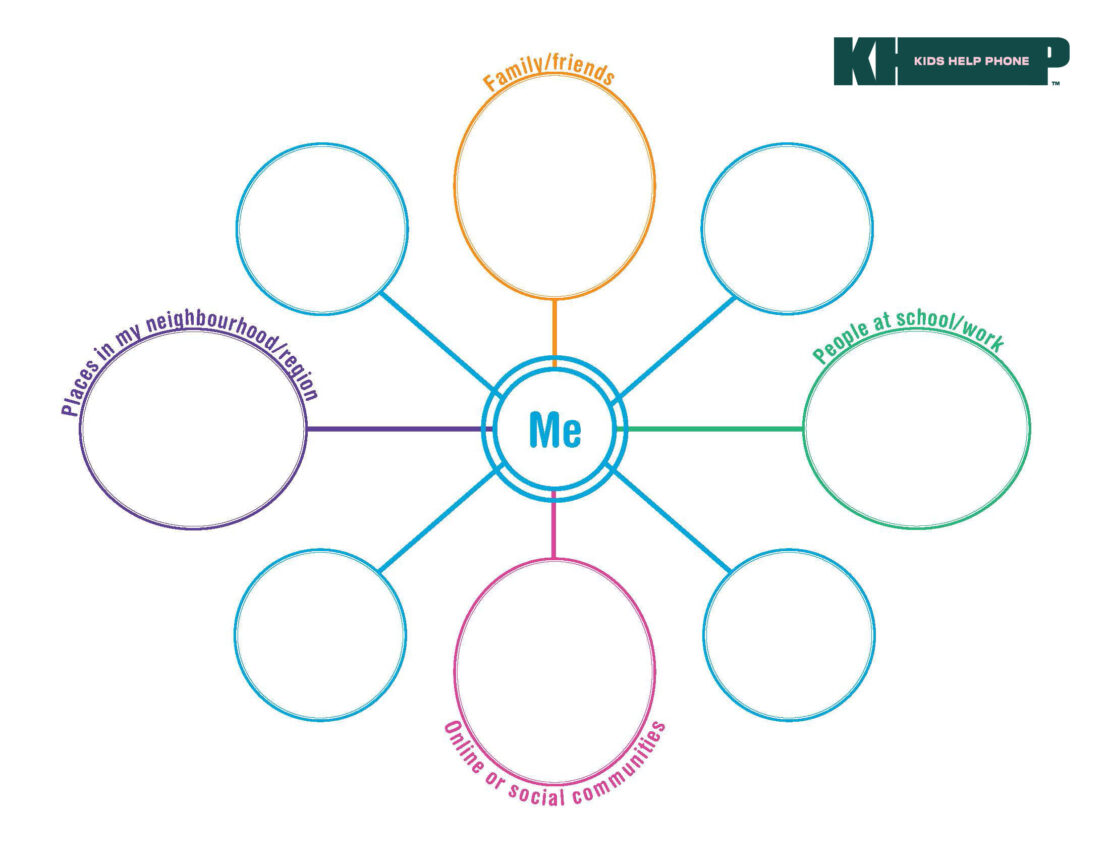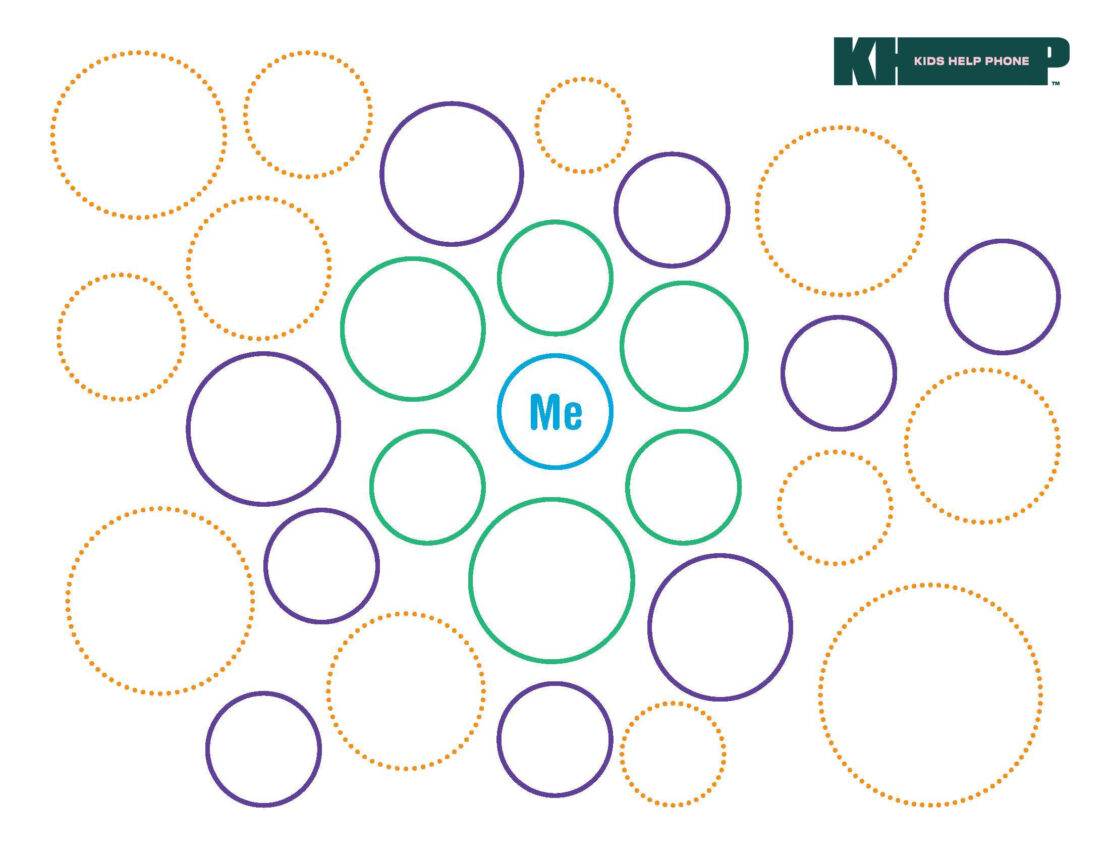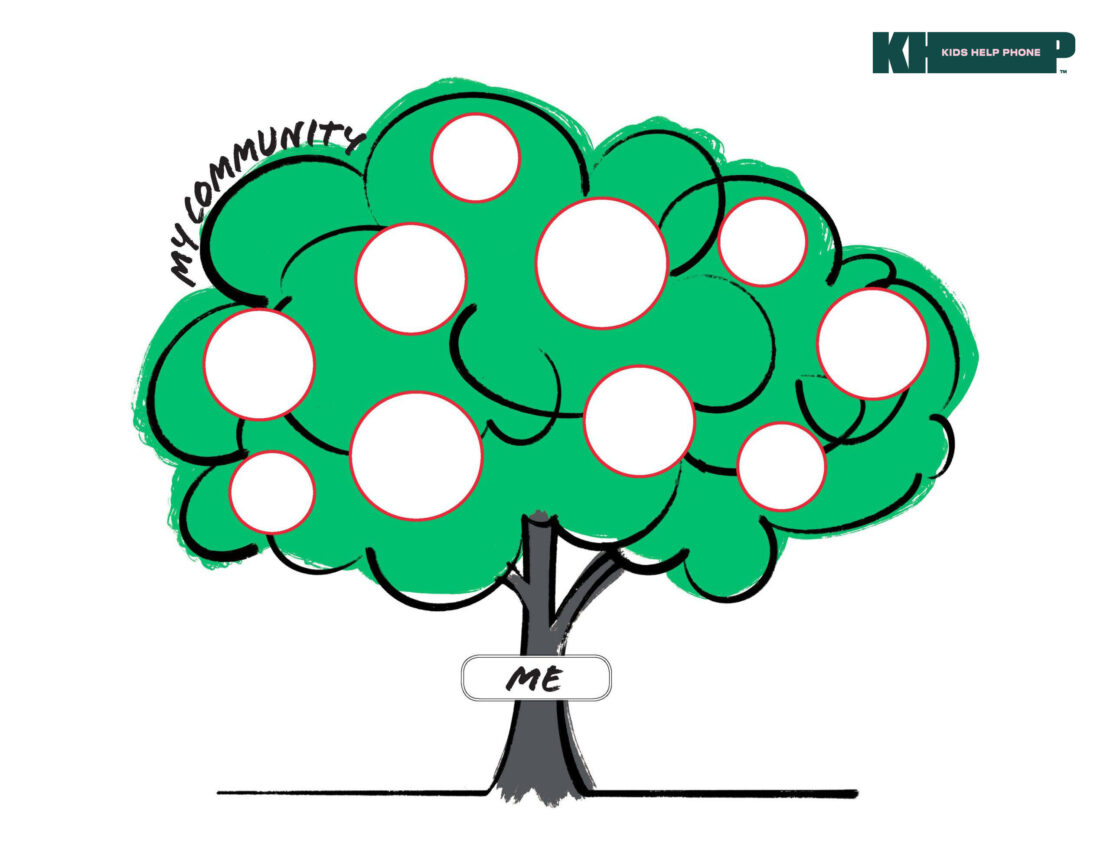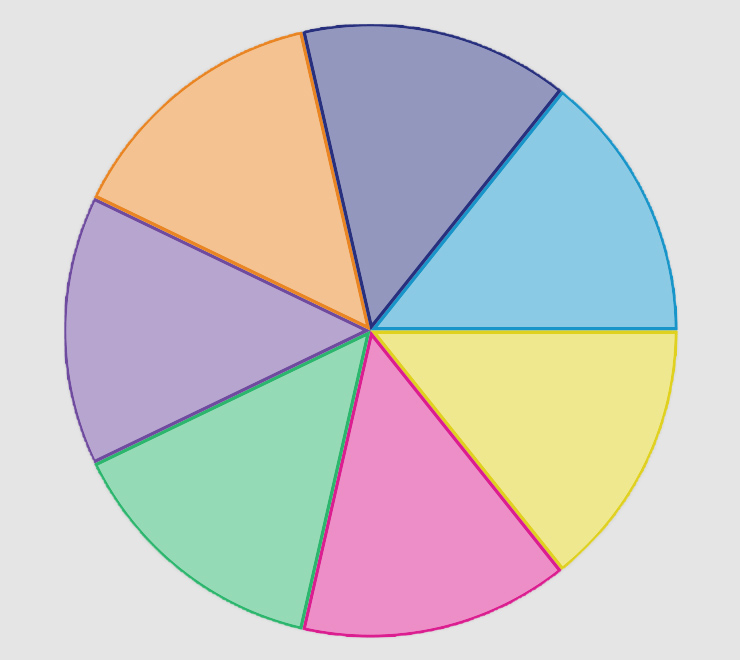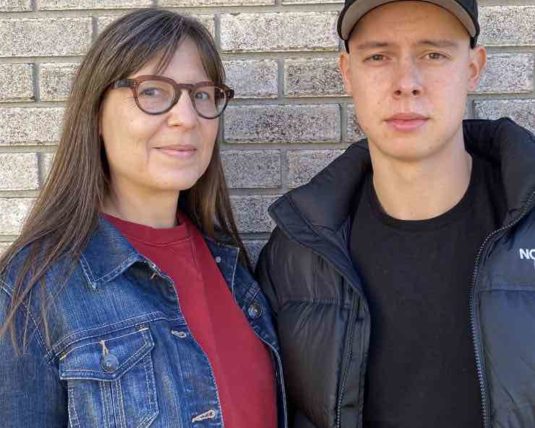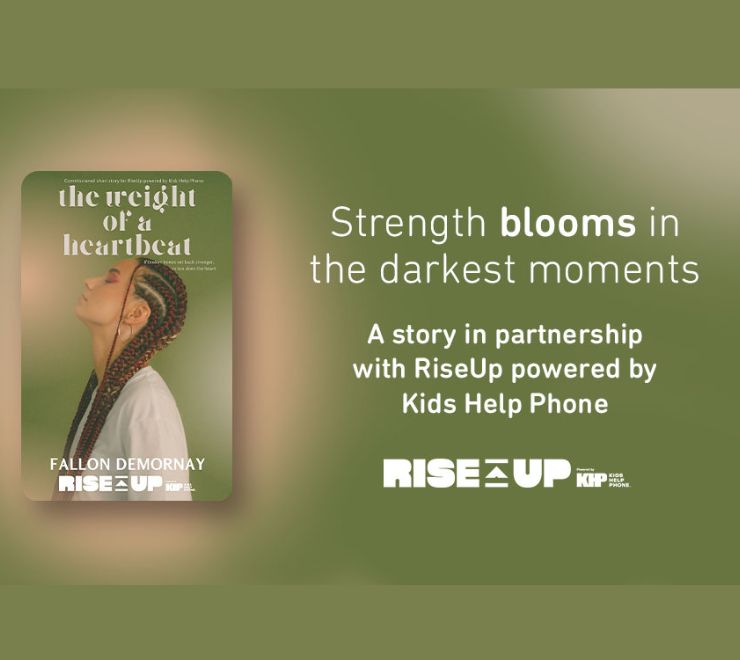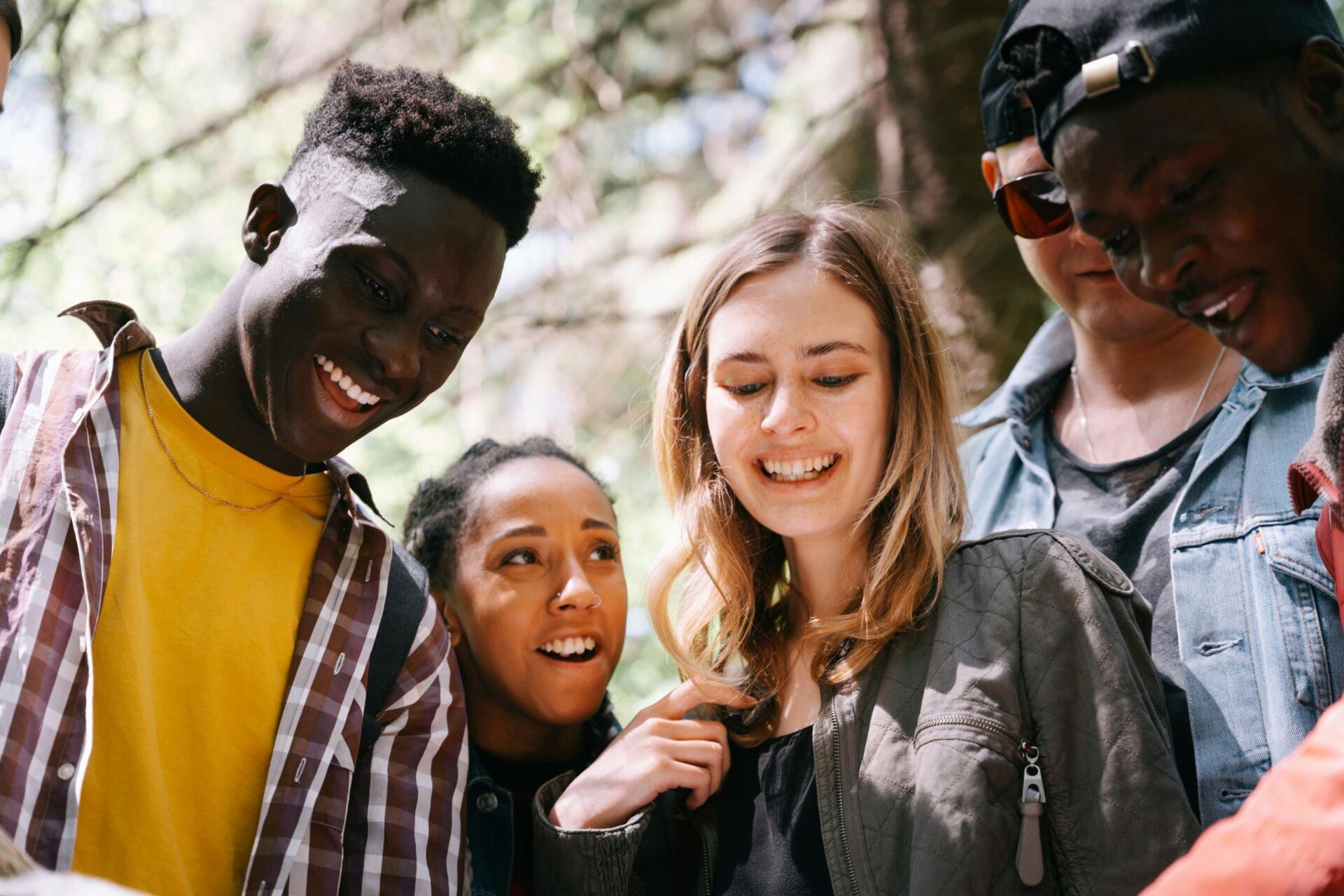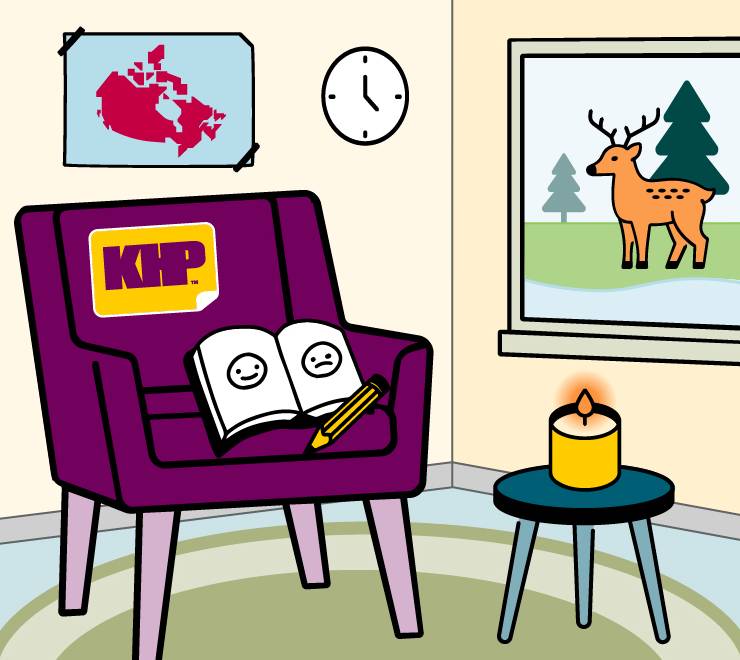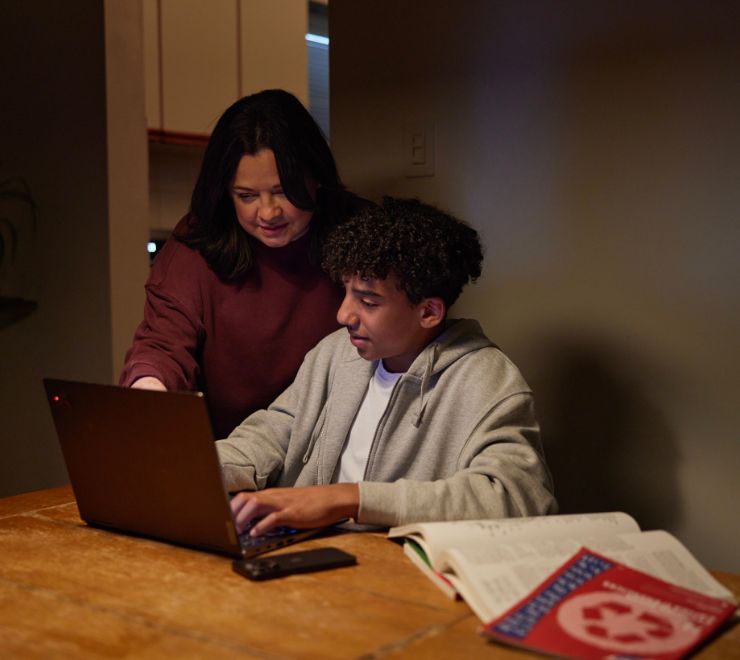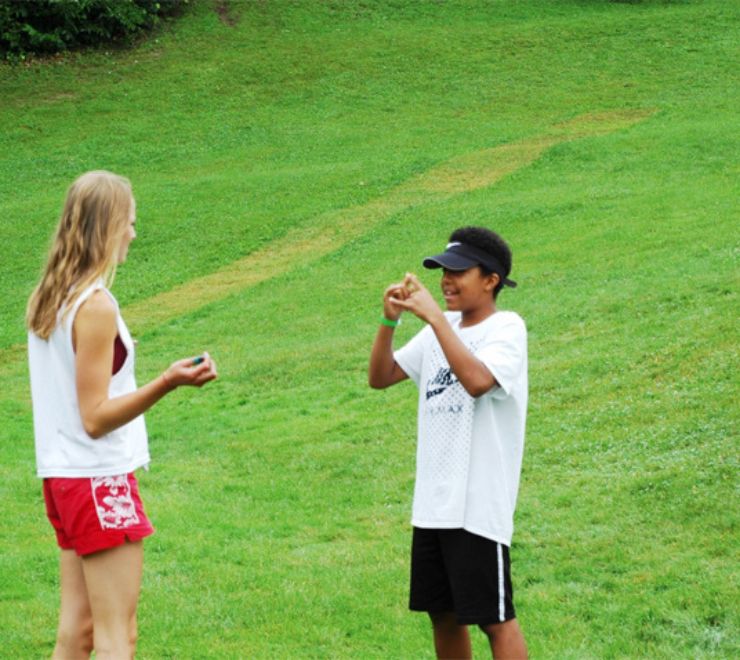Community plays a big role in improving your mental, emotional and spiritual health. A community is a network of people and places where you can feel cared about, get support when you’re struggling and check in with about how you’re feeling. Here, Kids Help Phone provides tips and ideas for identifying who and where your community is so you can get support when you need it.
What is a healthy community of support?
A supportive person is someone who cares about you and your well-being. They may listen actively (e.g. ask for clarification or reflect back what you’ve said), make validating comments (e.g. “that sounds hard”, “it makes sense that you feel…”) and ask questions about how you’re feeling and how they can help. A supportive person is someone you trust and feel empowered around, like a close friend or safe adult.
Supportive communities are rooted in mutual trust and acceptance. Building a community is an intentional process that often comes from nurturing relationships with others. Your community of support is unique to you, and it’s common (and encouraged!) to find support in more than one place. You may also find that your different communities offer you different kinds of support. Your community doesn’t need to be big to provide you with a sense of belonging. It’s most important that you feel safe, loved and accepted for your true self.
Some examples of where you can find community:
- community centres, neighbourhood groups, teams and extra-curricular activities
- friends, family or pets
- school (e.g. peers, counsellors, teachers, etc.)
- online (e.g. peer-to-peer platforms, support groups, chat rooms, etc.)
- people who share your culture, identity or values
- the natural world (e.g. bodies of water, forests, etc.)
- places of worship and spirituality
- and more
It’s OK if your community and relationships change over time, and you may have noticed more of a shift while adapting to COVID-19 restrictions. Not being able to connect as easily in person makes it even more important to recognize the community available to you and think of new ways to connect. It may also be useful to check in with yourself now and then to make sure that your communities of support feel connected to your interests, values and beliefs.
Mapping out your community of support
You can identify your community of support using the activities on this page, or simply by making a list — whichever you prefer. Once you choose the template(s) that works best for you, it may be helpful to ask yourself the following questions:
- How can I connect with community I already have?
- What communities do I want to engage with more?
- What support is available to me virtually or online?
- Who can I reach out to when I’m having a bad day or feeling lonely?
- Who can I reach out to when I have good news or something to celebrate?
- Who can I reach out to when I need advice or help solving a problem?
- Who can I reach out to when I need more immediate support?
- What support is available in my neighbourhood or close by? What support is available at a driving distance or at a safe physical distance through public transit?
Try these templates
Click on any of the images below to download a PDF. Depending on the technology you have access to, you can either fill it out on a device or print it. Then, you may want to reflect on what next steps you can take to build or strengthen your community of support. It can also help to refer to it when you notice you need a reminder.In the four larger circles, note family/friends, people at school/work, in your neighbourhood and online/social communities that support you. Use the additional circles to note the other people and places that support you and/or provide you with a sense of community.
In the circles surrounding you, note the names of people who represent your closest, primary community of support (or your “pod”). In the additional circles, note the networks, organizations or groups that you can connect with. The dotted lines represent people or communities who could be in your “pod” but may need a little more work or relationship building. Adapted from the Bay Area Transformative Justice Collective (BATJC)’s Pod Mapping Worksheet.
Use the circles in the tree to note family, friends, people at school/work, in your neighbourhood and online/social communities that support you. The tree can be a helpful reminder that these people and places can support you and your personal growth.
Where can I find related information?
These tips and resources about connecting with others and finding supportive spaces may be helpful to you as you map out your community:
Having a community of support can be a helpful way to care for your well-being. While support networks can take time to build and might change over time, there are benefits to having people and spaces you can connect with for help.

